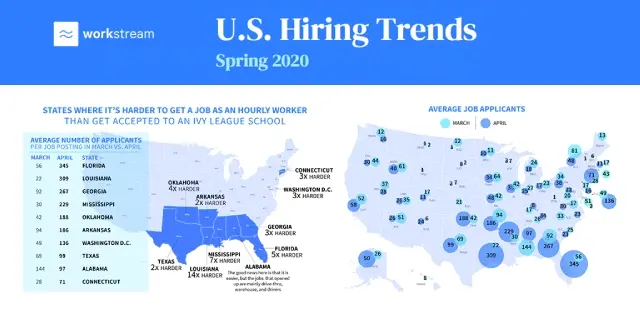Do you remember the advice you got early in your career? The one that encouraged you to never ask what the job you’re interviewing for pays? Well, that advice is slowly becoming obsolete.
Recently, NYC passed a law changing how pay rates are revealed to job seekers. The new law states that when employers’ posts job openings, the pay rate must also be listed alongside job requirements and duties.
Why was the salary transparency law imposed?
The NYC law is set to go into effect in April 2022. The aim for these laws, even though they differ some from state to state, is largely to reduce wage disparities for women and minorities.
Women and minorities have been, on average, paid lower wages compared to male and white counterparts. According to the Economic Policy Institute, women on average make 22.6% less than men with the same education in the same role. And women who wait on tables in restaurants also make 12% less than their male coworkers. Plus, from findings of another report done by the Economic Policy Institute, black workers make up about 1 in 6 of all the workforce in front line industries, including service workers and are paid roughly 26.6% less than their counterparts.
The New York City Council passed the bill in December, joining Colorado and California that both recently passed the law stating that wage ranges need to be part of the job ad. Some states, such as Maryland and Washington, and some cities in Ohio, like Toledo and Cincinnati, have already had these requirements in place, helping improve the gap in wages and create equitable work conditions.
What does wage transparency mean for employers?
The first thing to understand here is that if you’re not already sharing wages in your job posting, you’ll most likely need to do so in the near future. California and NYC give insight on what’s to come down the road—and across the nation.
The laws ban employers from using the applicants’ salary history when determining what to pay them. For example, say that an applicant was being paid $10/hour at previous jobs, but the job you might be offering them is slated to pay $15/hour. In this scenario, you could not ask about their previous compensation (or use this information, if learned) to offer a lower range because of their history.
Second, the laws grant applicants and current employees the right to access a company’s pay range for a particular job. Hence, if employee A wanted to know what employee B was making for the same job, they can do so. Additionally, an applicant can ask that taboo question: “What does this company normally pay for this role?”
Why is salary transparency beneficial for employees (and employers)?
Listing wage ranges on your job openings is a great way to help potential candidates find you and determine if the job is right for them. Many job boards today allow people to filter roles by their pay requirements. This, of course, cuts down the amount of time potential applicants spend looking for roles that align with their needs (and yours).
Pay transparency also removes the stress of negotiating pay once the job is offered. And for those people who don’t negotiate? Well, those who are likely to accept the wage they were initially offered—who didn’t ask for more—may develop a sense of resentfulness once they learn they could have been earning more.
And with transparency of salary, current employees will find more job satisfaction. When they don’t have to wonder if their coworker who is performing the same duties is making more than they are, they’ll be better supported to focus on their responsibilities and the customer experience.
How can employers use pay transparency to their advantage?
At first, you might think you are losing your advantage in the hiring process if you already have all your cards on the table when it comes to wage negotiation. But that won’t be the entire case. True, there is a chance you will pay out more than before, but there will be advantages you have to consider.
In the tight labor market, having the pay wages listed on your job ads will attract more qualified employees. You will save time with your hiring process as only those who are looking for the wages you are listing will apply. Remember, a lot of time is wasted with the application and interviewing process when the candidate looks at the pay and says they were looking for more.
And if you were wondering what your competitor down the road was paying their employees, a simple search of their job listings will give you all the information you need to be competitive. And if you’re advertising competitive wages on your job ads, you’ll also be boosting your employer brand.
It can also help you hold on to employees during the labor shortage. With wage transparency, a current employee who might have considered leaving your restaurant due to uncertainty of whether they were being paid fairly will more likely stay with your organization, confident they are doing just as well as their coworkers.
Final thought
Hiding what the pay range of an open position on a job ad was always troublesome for potential candidates. Posting the range so everyone can see it and make educated decisions on whether to apply or not benefits everyone, saving hiring time and closing the pay gap to those who normally were offered less compensation for the same quality of work.





